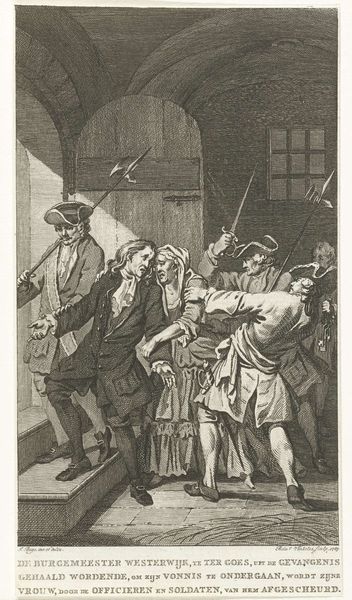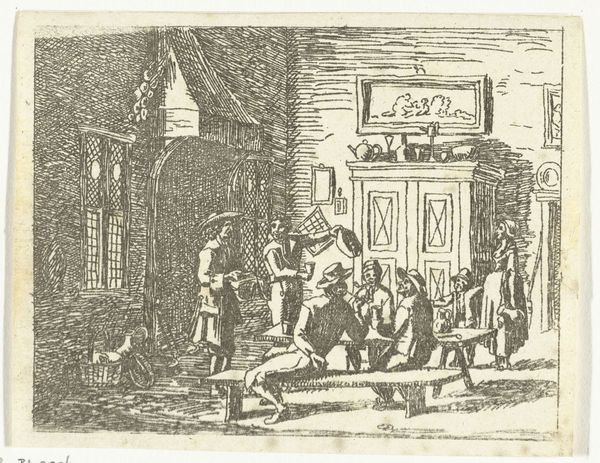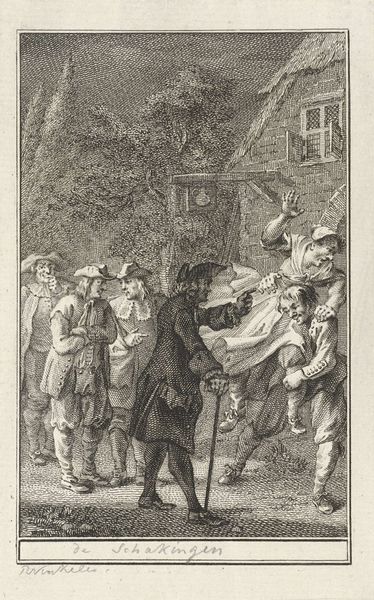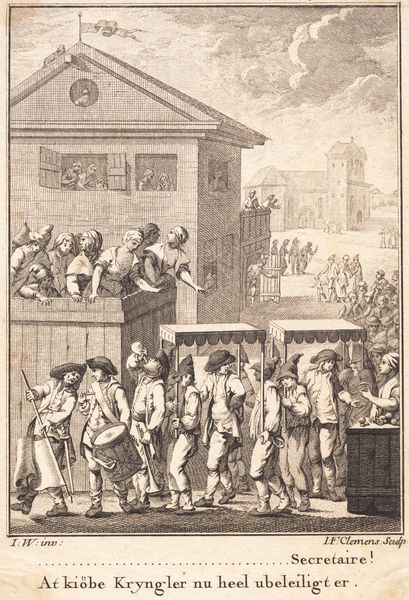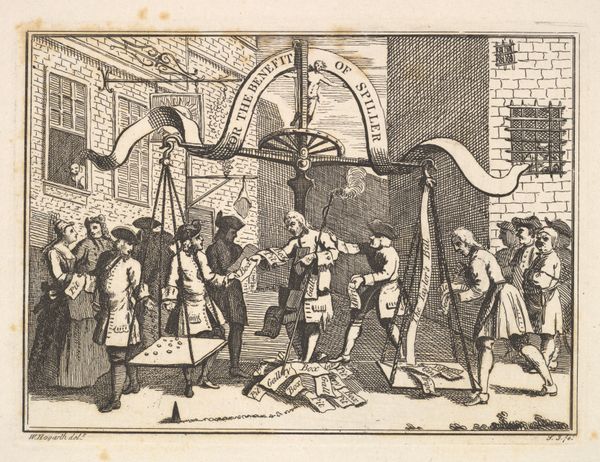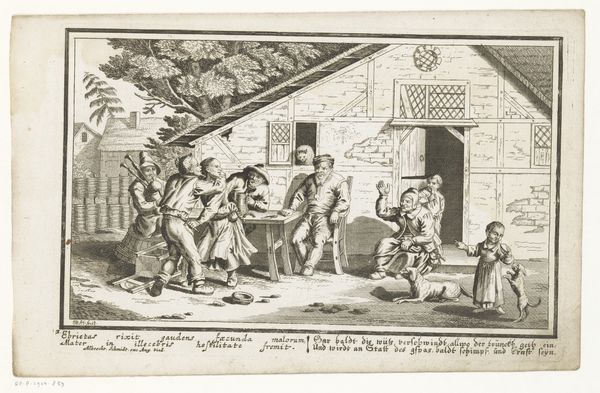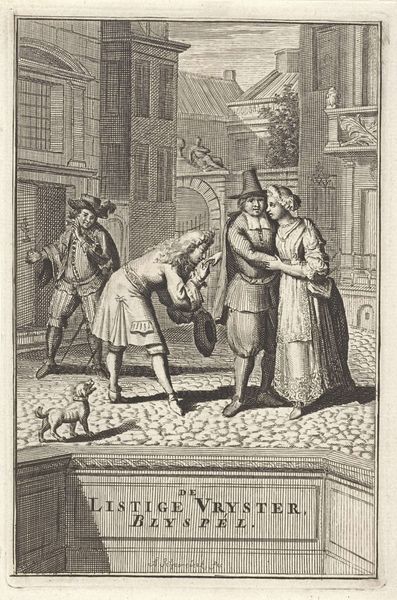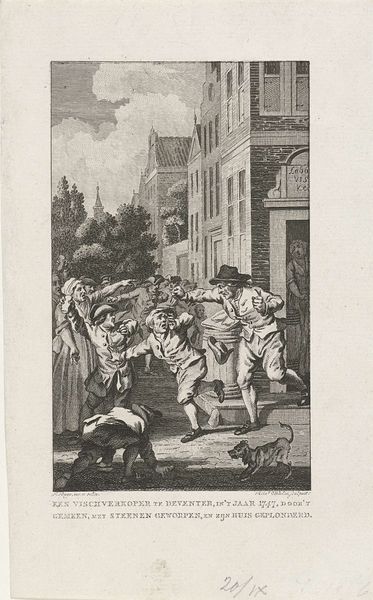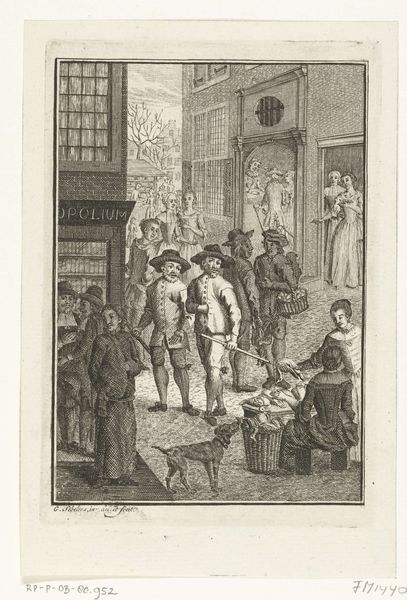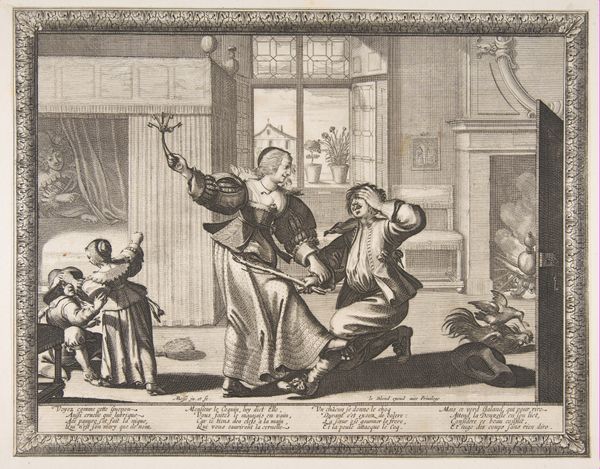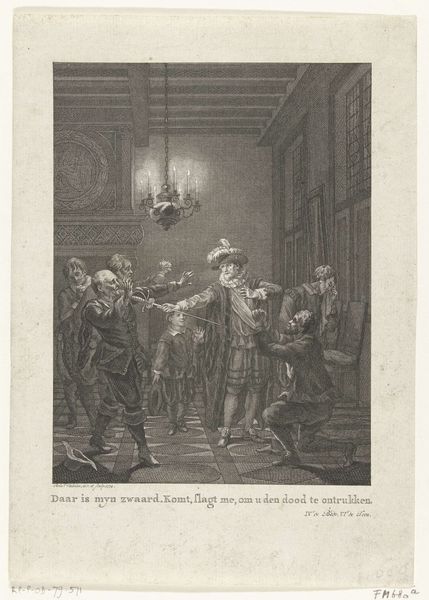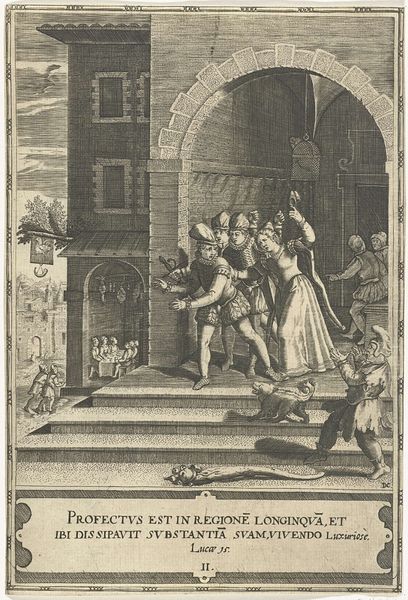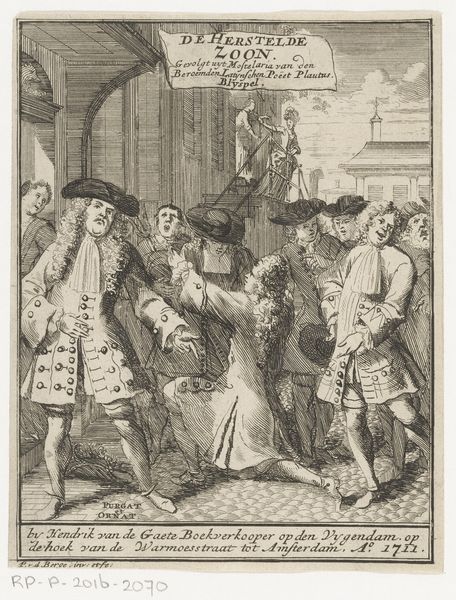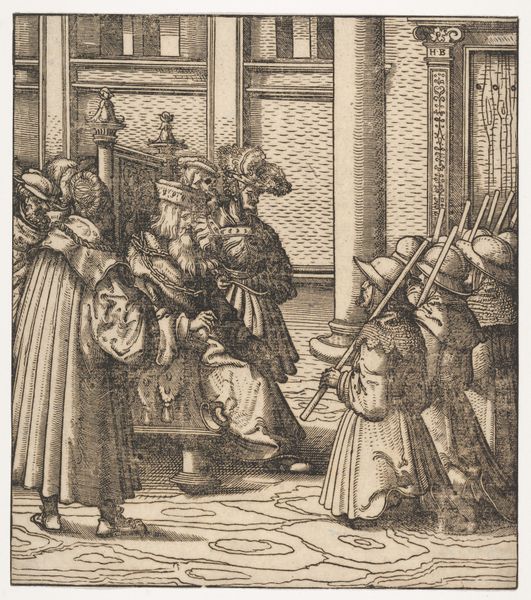
print, engraving
#
baroque
# print
#
old engraving style
#
genre-painting
#
history-painting
#
engraving
Dimensions: height 146 mm, width 94 mm
Copyright: Rijks Museum: Open Domain
Curator: Here we have a print entitled "Slachtoffer van bezetenheid of tovenarij (nr. 1)," or "Victim of Possession or Witchcraft (no. 1)." It was created around 1658, artist unknown. What are your initial thoughts? Editor: The stark contrast immediately draws me in. The strong lines create a real sense of drama and unease, especially around the figures in the foreground. There's a visual weight there, a dark concentration that contrasts sharply with the lighter background. Curator: It is definitely a product of its time. This print offers insight into the prevailing beliefs and anxieties surrounding witchcraft and demonic possession in the 17th century. Look at the gathering of concerned figures—likely community members—and their ambiguous gestures. What power dynamics are at play here? Editor: The composition emphasizes their powerlessness. Their bodies form a kind of barrier, yet their gestures seem ineffectual, even theatrical. Note the repeated forms: the echoing lines of the drapery, the floorboards, even the way the figures' limbs mimic each other. It's a visual symphony of concern and perhaps, helplessness. Curator: The engraving highlights how accusations of witchcraft were often levied against marginalized individuals. Consider the potential gender and class dynamics embedded in this scene. Is this individual truly possessed, or a victim of societal scapegoating? Editor: An intriguing point. I wonder if the starkness of the engraving lends itself to the sense of hysteria, too. The very materiality of the work underscores a lack of subtlety, perhaps reflecting the blunt force of these accusations. The lines of the engraving itself act as an allegorical net, capturing the victim in the web of representation. Curator: Indeed, the print, through its historical context, challenges us to question narratives of power and control, then and now. What are the lasting implications of these accusations and how do they echo in our present social and political landscapes? Editor: Absolutely. Beyond its historical significance, the formal qualities elevate the image to a meditation on fear, community, and the ways we visually process societal anxieties. Curator: It's a compelling example of how art serves as both a reflection of and a commentary on the human condition. Editor: A stark reminder of the enduring power of visual storytelling, even when stripped down to its most essential elements.
Comments
No comments
Be the first to comment and join the conversation on the ultimate creative platform.
